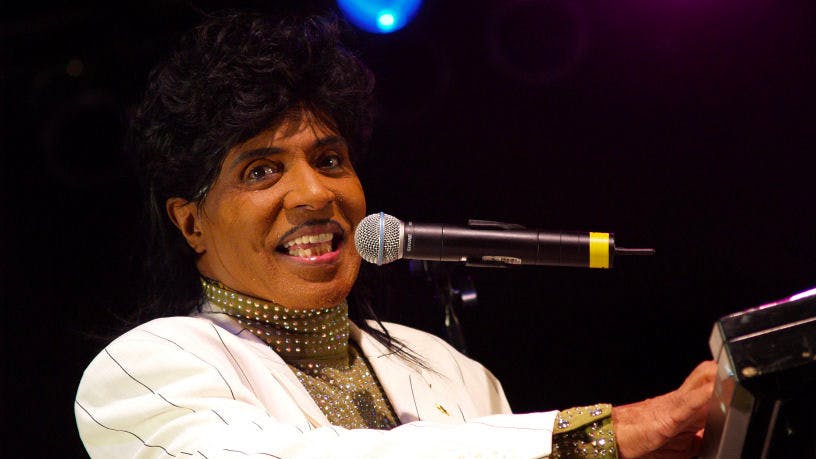Richard’s impact on a global audience was writ large when he appeared in the 1956 film The Girl Can’t Help It – a movie that introduced audiences around the world to American rock’n’roll.
Suddenly, a generation of bored teenagers where able to witness Richard’s flamboyance for themselves. His electrifying performances provided them with an alternative to the mundane post-war reality that surrounded them. The newspaper reports of the time confirm the riots that occurred in local cinemas as a result.
Equally, his influence on his contemporaries – Elvis Presley (who described him as the greatest), James Brown and Otis Redding among them – was evident. So too was his impact on a generation of emerging musicians.
As the ‘60s dawned, however, things became increasingly hard for the first generation of rock’n’roll performers – Richard among them. In a short period of time, they were rendered obsolete by the British Invasion of 1964, as UK-based bands The Beatles and The Stones (all Little Richard devotees, who had supported him in the UK a mere matter of months earlier) launched themselves in America.
READ THIS: 12 of the most metal artists from before rock'n'roll existed
And yet, Richard’s influenced did not wane. You can hear it on the opening drum cracks that introduce Good Times, Bad Times – the first track on Led Zeppelin’s earth-shattering, self-titled 1969 debut. Deep Purple, meanwhile, overtly referenced Richard’s 1958 classic, Good Golly Miss Molly, and Tutti Frutti on their own 1970 crash-bang-wallop hit, Speed King, while Detroit proto punks MC5 covered the track wholesale in that same year on their album Back In The USA.
But Richard’s impact didn’t stop in the ’70s. Nor has his music become a museum piece. Why? Because you can still hear his influence in every single band that tries to string three-chords and an attitude together.
